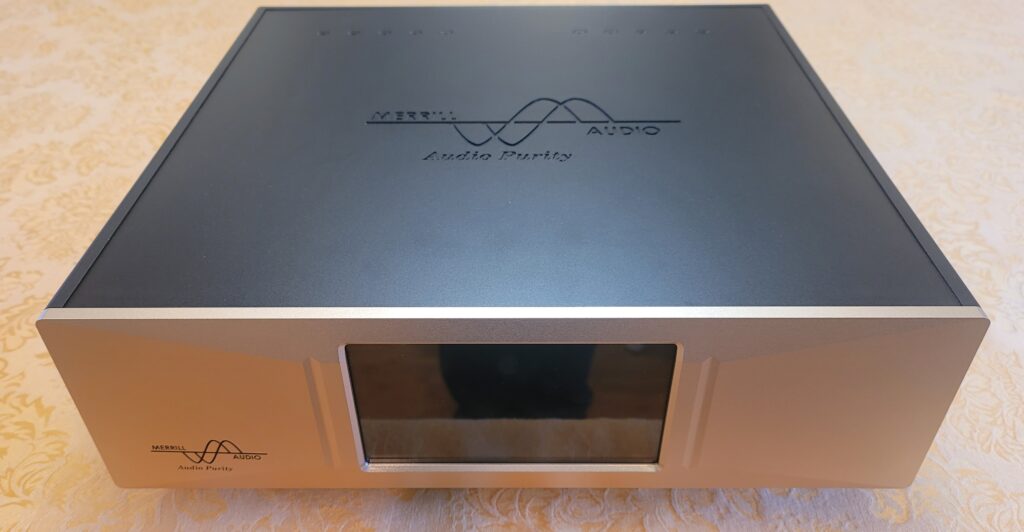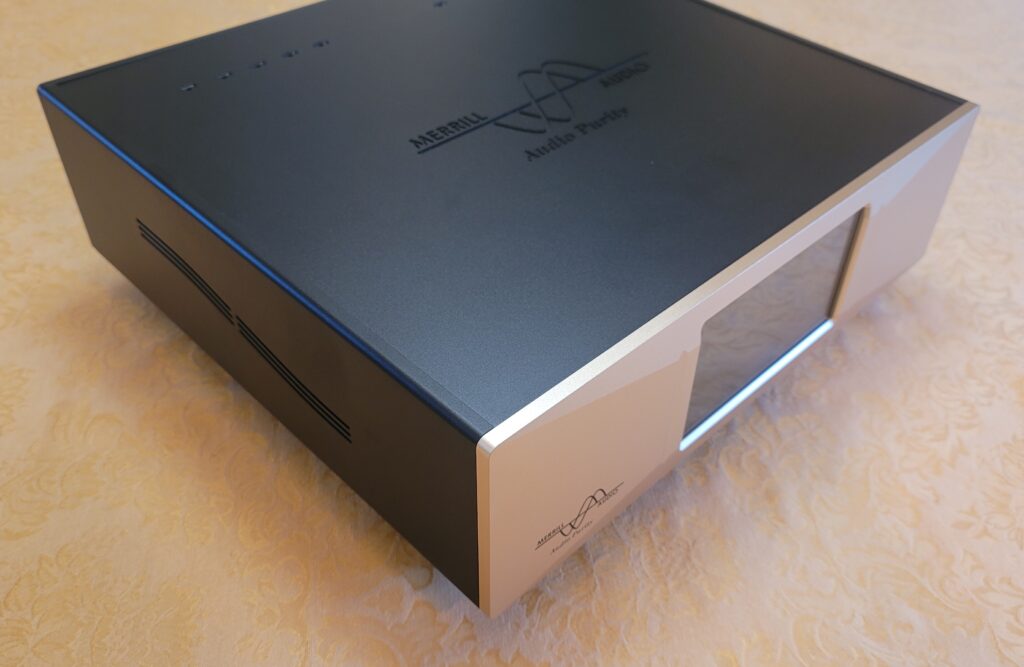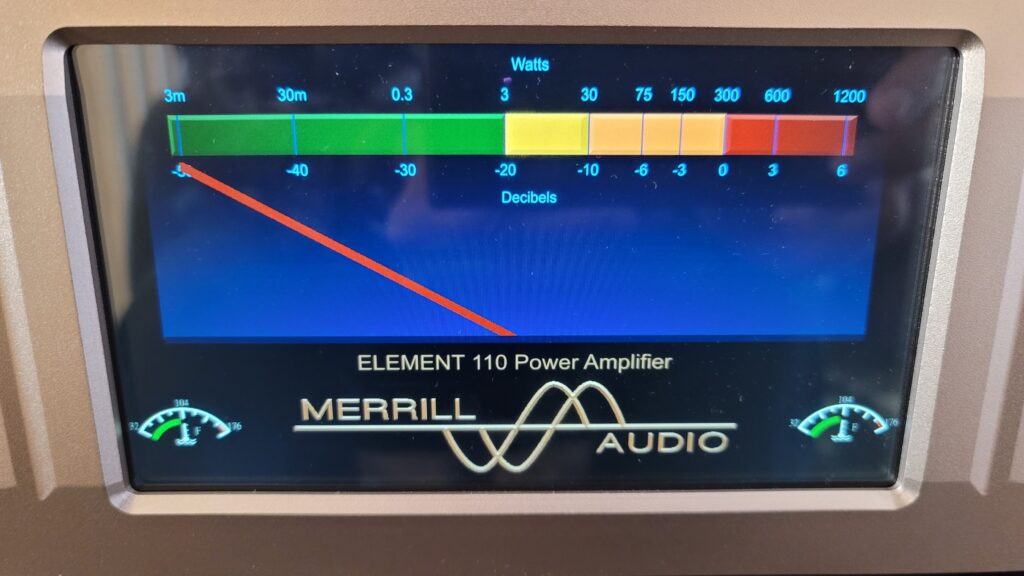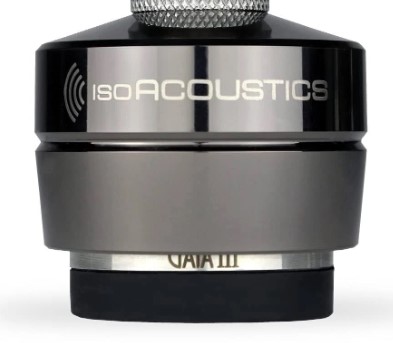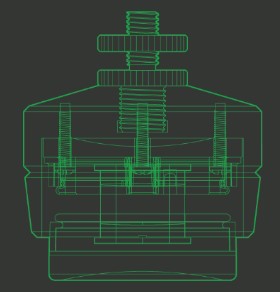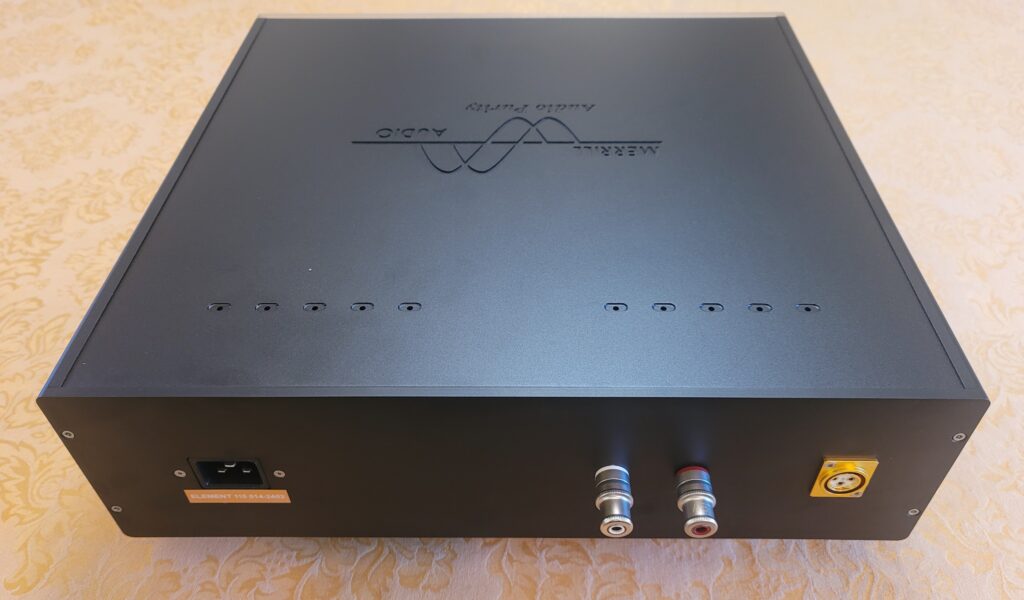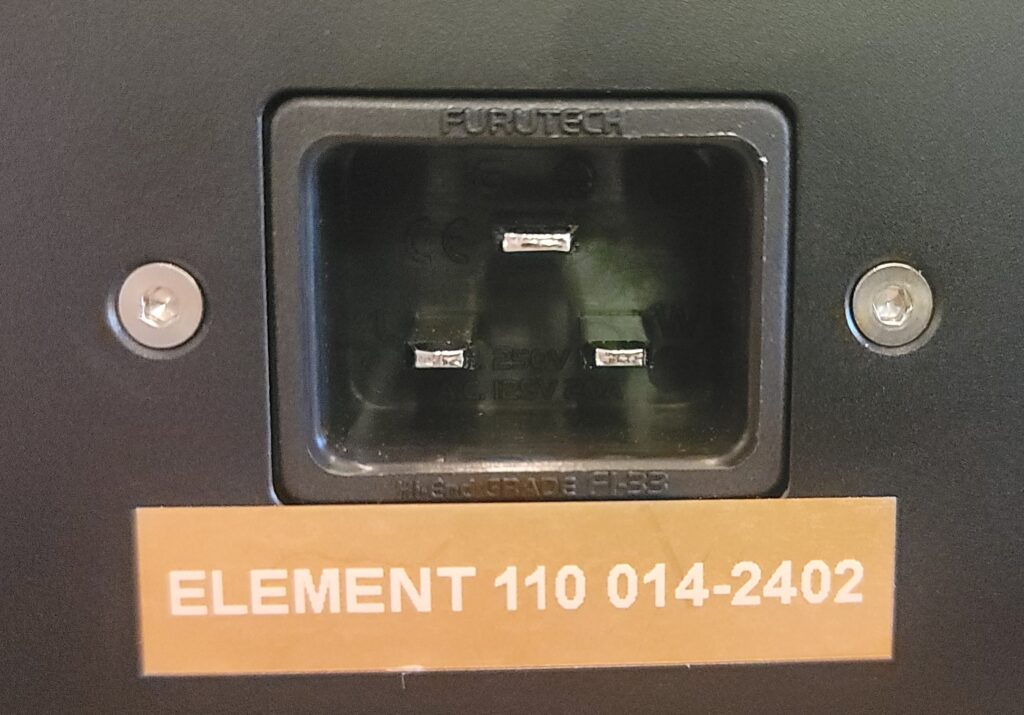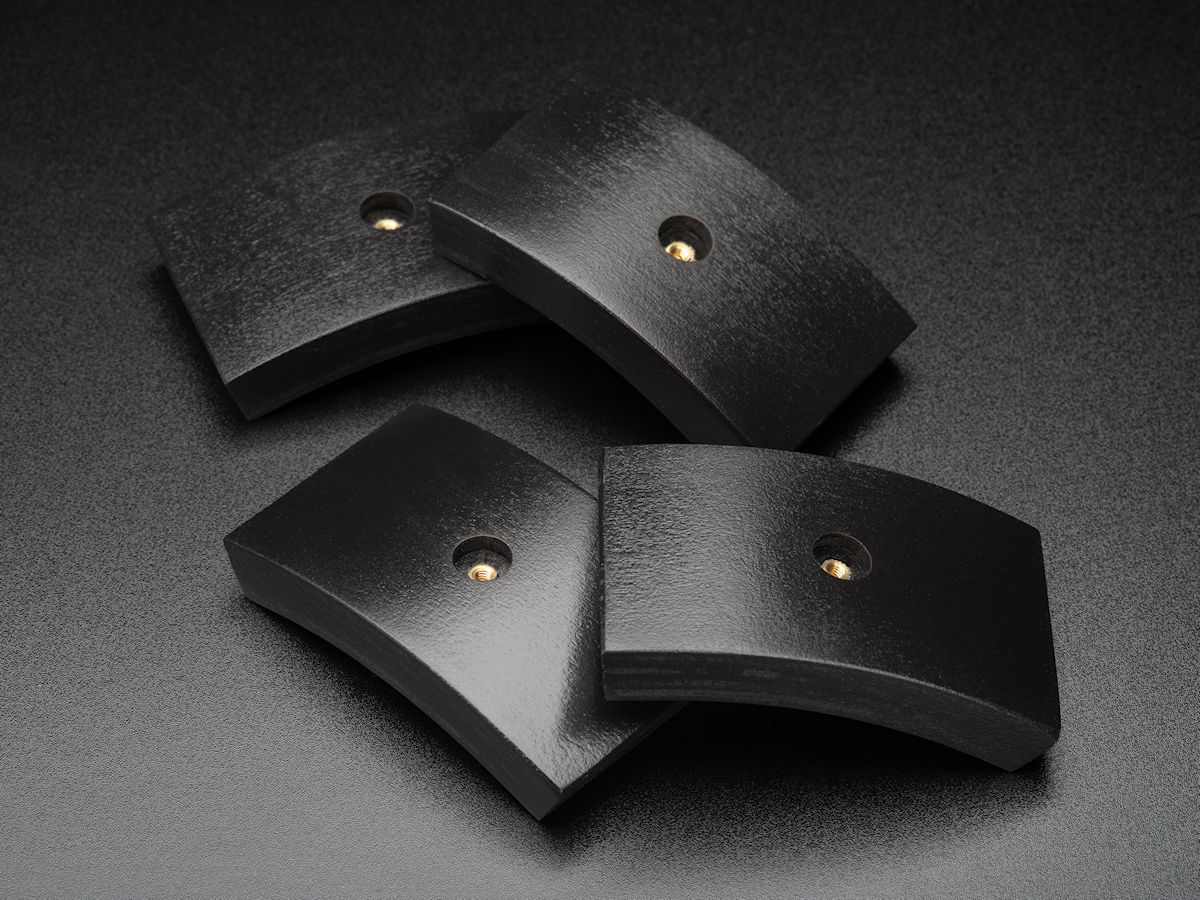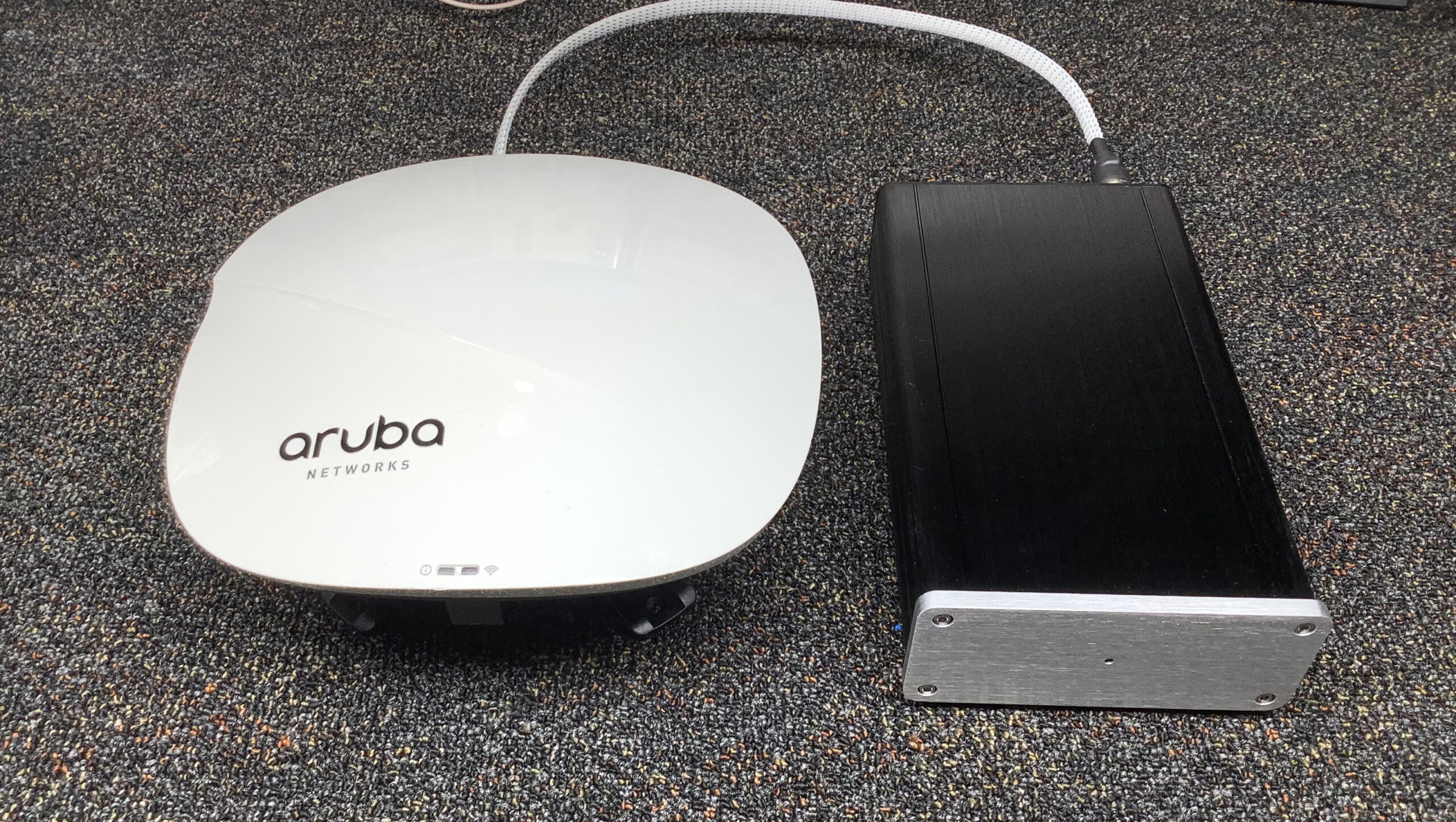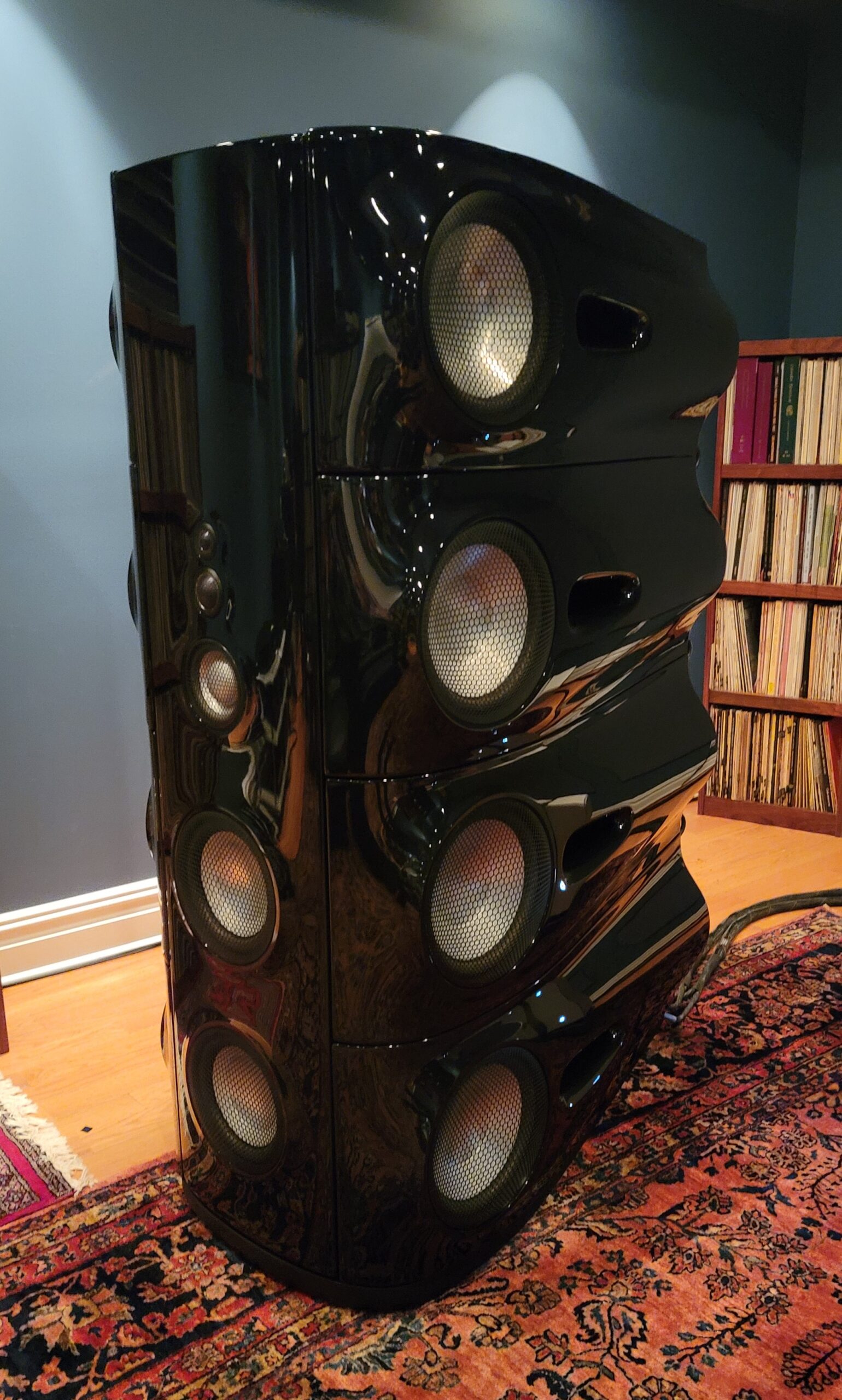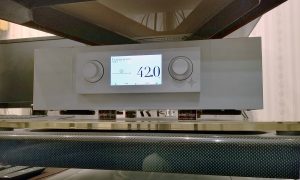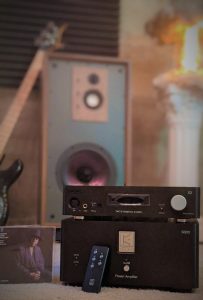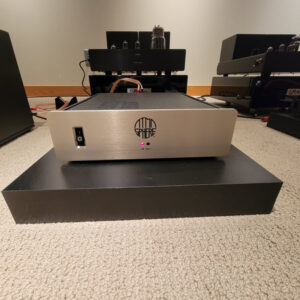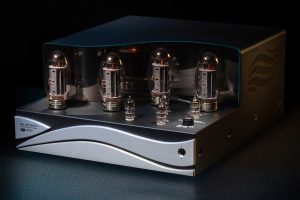Dean Waters with Cigar: a Portrait. (Photograph and image processing by David W. Robinson.)
The Merrill Audio ELEMENT 110 Monoblock Amplifier (image by Dean Waters)
As we continue our never-ending journey towards audio bliss, one of the things we look for is transparency. That is to say, music presented without colorization or modification by the components that make up our complete systems. We all have our own personal preferences as to sound reproduction. Even so, we still want our systems to deliver un-biased recordings, just as they were intended to be reproduced by the artists and recording engineers.
To this end comes Merrill Audio and their ELEMENT series of mono-block amplifiers. I've had the pleasure of listening to a pair of the brilliant ELEMENT 110 for the last few months—and I'm extremely happy with what I am hearing. Merrill Wettasinghe, founder and company namesake has adopted a purposeful design strategy designed to eliminate anything not embedded in the original signals being fed to the amplifiers. The phrase "Audio Purity" are part of the company logo. These are not mere words, but a passion.
The ELEMENT 110's are the smallest of the series of available options in the ELEMENT product line. They are, as one would expect, the most affordable. After the 110, comes the ELEMENT 114, 116, and 118 models. Each model follows the same design fundamentals as the others. The main differences are quality of internal components, available power, and price. Even though the ELEMENT 110 is the baby of the family, don't be fooled. It's a big family! It comfortably provides up to 150-watts @ 8 Ohms (300W @ 4 Ohm, and 600W @ 2 Ohm). I use the word 'comfortably' because these are highly efficient amplifiers that draw very little power over and above what is being sent to the loudspeakers and produce almost no wasted heat whatsoever, even when being driven at loud levels. Power ratings for the ELEMENT series mono-blocks go all the way up to 400W @ 8 Ohm with the top-of-the-range ELEMENT 118's.
Interestingly, the original names for the different amplifiers in the ELEMENT series ware to be the names of the actual chemical elements corresponding to the matching number on the periodic table. Thus, the ELEMENT 110 was to be named Darmstadtium (a synthetic chemical element with the atomic number of 110). However, it was decided that some of the other names in the series for the other ELEMENT amplifiers (Flerovium, Livermorium, and Oganesson) would be just too unwieldy and difficult to pronounce to make good product names. Instead, the element number took its place in the series' naming convention.
Merrill Audio was started in 2012 and the next five years were devoted to design and testing. The first prototypes were crafted in 2017 and the design principles of true colorless delivery have been at the heart of Merrill's product offerings ever since. The core design fundamentals and faithful renditions of recordings remain constant throughout the ELEMENT product line.
The ELEMENT 110's feature a thick paneled all-aluminum black frame with a gold-tone metal front with the logo neatly displayed on the front lower left. There is a 7" (178mm) glass touch screen on the front panel that allows control of the amplifier and provides a digital Vu meter and an internal temperature gauge. By touching various parts of the screen, the amp can be toggled in and out of mute (sleep) mode. The temperature gauge can be switched between Fahrenheit and Celsius by touching the gauge in the display. There are 10 different levels of display brightness to choose from by touching the logo on the screen.
The feet on the bottom of the 110's are the Gaia III's from isoAcoustics and were hand selected by Merrill for their superior dampening and to isolate the amplifiers from surrounding vibrations.
Images courtesy of isoAcoustics
These are class-D amplifiers that don't have many of the limitations that we often expect from class-D. There is no harshness nor anything that would cause ear fatigue even during the longest of listening sessions. The internal clocking is done through custom logic circuits and is both highly stable and extremely accurate. Gallium nitride (GaN) is used throughout. GaN has a faster response to changes in voltages than traditional conducting materials. This additional speed allows for the elimination of undershoot/overshoot to the amplified signal that powers the drivers in the speakers. It also eliminates dead time; the moment in time when the voltages are changing on the circuits and the time it takes for those changes to be applied to the materials carrying the load.
To further eliminate artifacts and colorization, any additional components in the signal path have been eliminated. There is no power switch, for example. This also means that a 12v trigger connector is also not needed. These amplifiers are designed to be powered on and left on. When not in use, touch the corner of the screen and put the ELEMENTs into mute/sleep mode. In this state, they draw between 2.9 to 5.6 watts of current depending on the screen brightness setting. Powered up (non mute) at idle will draw between 19.5 to 22.4 watts of current. That's impressive for a fully powered up amplifier with this much available power (not to mention a lit touch screen) to draw such a small amount of juice with all the circuity engaged and ready. In a word, these mono-blocks are efficient.
The power connector at the rear isn't the standard C13 plug that is normally used. (C13 is the type of connector you find on most audiophile gear as well as desktop PCs and countless other devices.) Rather, the larger C19 plug is used.
This larger connector is often found on high power draw servers found in data centers. C19 connections are themselves rated higher than the max draw of the amplifier. The key benefits of the larger connector are the blade contacts within the plug/socket are larger and they establish an increased point of connection between the plug and socket leads. In addition, the connection is considerably sturdier than the typical C13 connection.
When we step-up to better quality audio grade power cables using the smaller standard C13 plug, the first thing we notice is the connectors are often large. Very large in fact. There is a considerable amount of mass from the power cord connector sticking out of the back of the system components. With the typical C13 connectors, there's an uncomfortable amount of weight pulling down on the back or the devices. With the large connectors and the added weight of the audio grade cables, I've often felt that the ubiquitous C13 connectors seem under-sized for the heftiest of the power cables that get selected. This simply isn't a problem with C19 connections used by Merrill Audio. They are designed for larger plugs. I used to use C19 connectors and cables exclusively in rack-mount data-center power distribution whips. C13s were just too easy to slip out of the their sockets. In data-center environments, components are being moved constantly to make way for new & replacement gear as well as servicing of existing gear. In those environments, an unintended momentary loss of power due to a slipped power cable could have substantial consequences. Hence the standardization of C19's in those environments. Personally, I much prefer the C19s that Merrill has decided to use. I would be pleased if other equipment providers went down this path. It makes sense given that we audio-heads spend considerable time and effort fretting over getting the perfect cables for our setup. Speaking of….
For this setup I'm using a pair of Cardas Clear Beyond power cables with the C19 connectors on the Merrill end and the standard NEMA 5-15p plug on the supply end. Pure OFC (99.9999%) tin plated copper wiring is used with silver/rhodium plated solid copper contacts. All hand terminated here in Oregon (just a few hours from my house!). I find these cables to be a wonderful complement to the Merrill ELEMENT's.
The sound
What I like and appreciate most about the Element 110 is the complete transparency and lack of colorization. There is also an overarching sense of effortless in the quality of delivery. There is simply so much more headroom in the ELEMENTs that the signal never gets harsh or noisy, even when cranked up to "11." This is certainly a worthy consideration for the purists out there. All the dynamics, proper staging, and sound character is preserved and perfectly presented to the speakers. A true delight and a breath of fresh air to the ears. With these, each recording becomes a unique journey, just as the artists intended.
Devices that 'flavor' music with their own timbre can make different recordings all sound too much the same. In those scenarios, we end up listening to the gear rather than the music. This is critical (and we often don't pay enough attention to this). Each recording should sound like a completely different soundscape with the unique experiences buried deep within the performances. We want to hear music as the artists and recording engineers intended for us to hear.
Like many, I've previously fallen into the trap of having systems that colored the sound. It makes the performer become secondary to the system. That's just wrong. We become so comfortable with the way our individual system sounds because it makes everything sound a certain way. That isn't real life. No two recordings should sound the same. This is the work and reasoning behind Merrill's way of thinking. Color, timbre, and character should be left to the performers—the way it was intended. All of these nuances can be revealed to the listener, regardless of musical genre with the ELEMENTs. This is the brilliance behind design engineers that strive to get out of the way of the music.
Bravo, Merrill. Bravo!
Specifications
- S/N: 100db
- Gain: 23db
- Power rating: 600W @ 2 Ohm, 300W @ 4 Ohm, 150W @ 8 Ohm
- Input: XLR Balanced
- Power input: 20A AC inlet, Furutech Rhodium plated C19 socket.
ELEMENT 110 monoblock amplifiers
Retail: $12,500/pair
Merrill Audio
Equipment list used for this review: (borrowed items are in bold)
- Merrill Audio ELEMENT 110 monoblock amplifiers (x2)
- Mola Mola Makua pre-amplifier w/integrated Tambaqui DAC & Phono stage
- Vivid Audio Kaya 90 loudspeakers
- Cardas Clear Beyond power cables (NEMA 5-15P to C19)
- Kubala-Sosna Realization Series speaker cables
- RSX Technologies Benchmark Series Interconnect cables
- Sony UBP-X800M2 CD/SACD transport
- Asustor FS6712X SSD NAS
- Windows™ PC w/ Audirvāna – DSD/PCM streaming server
- PS Audio PowerPlant 15 power regenerator





